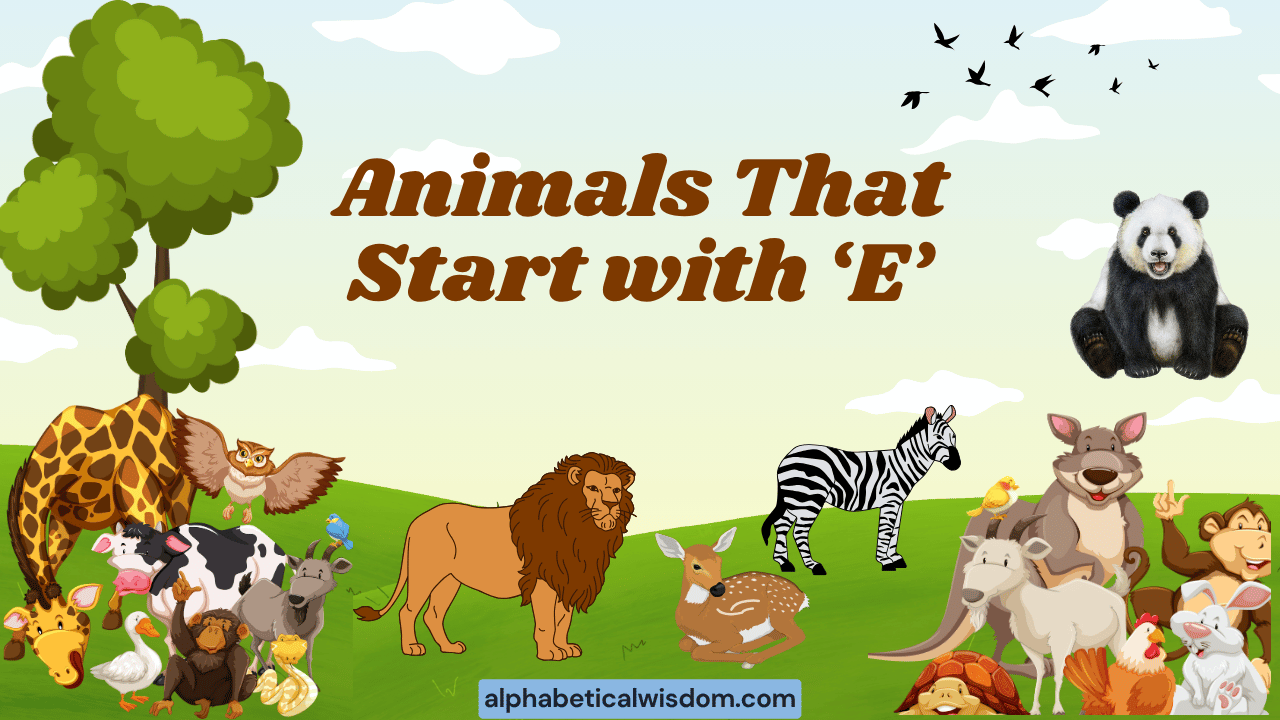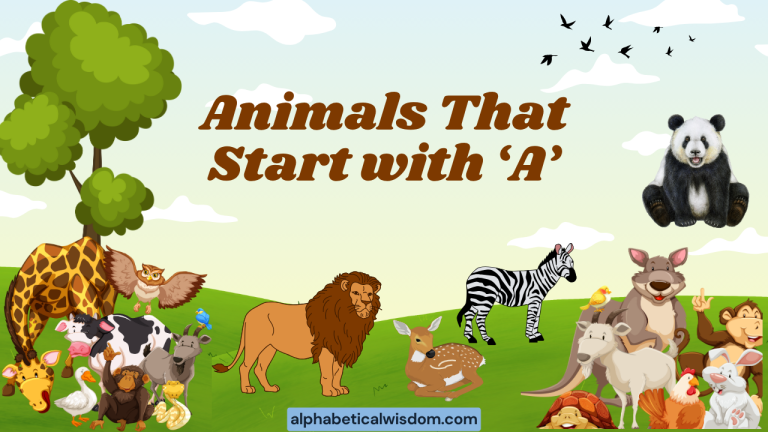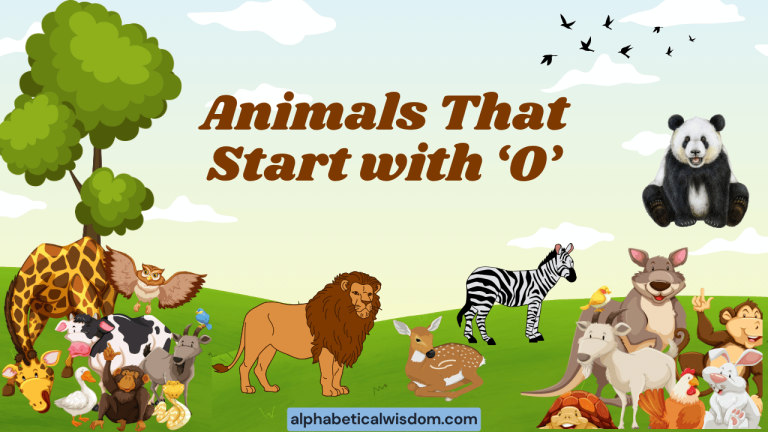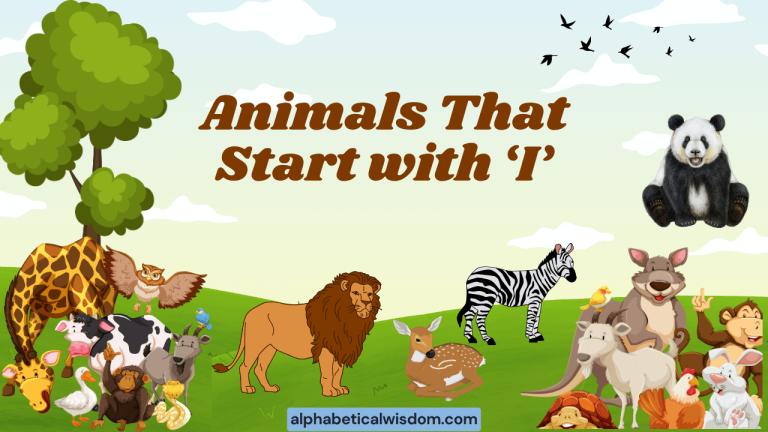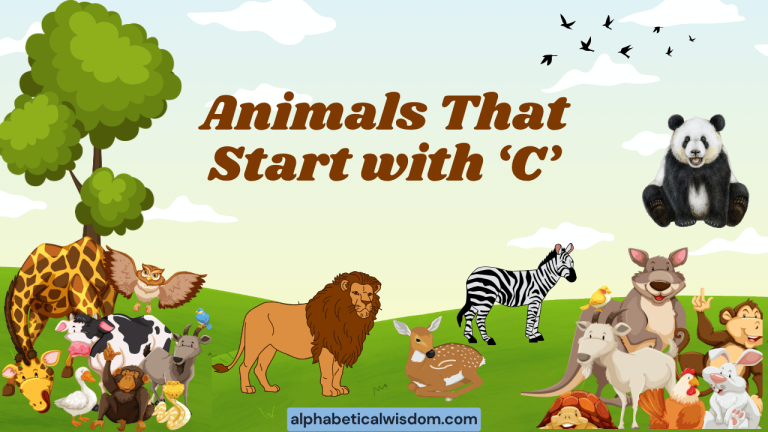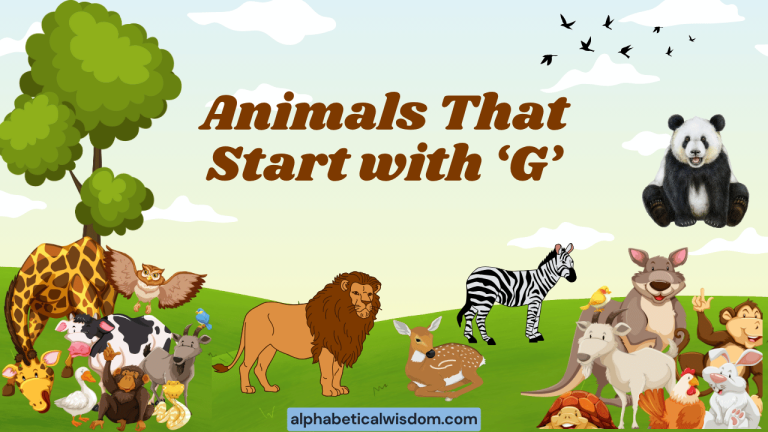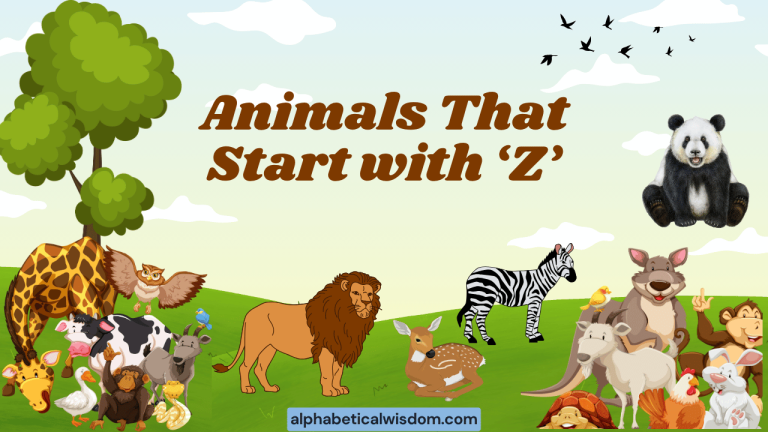Animals That Start With E: Grammar & Vocabulary Guide
Exploring animals that start with the letter “E” offers a fascinating journey into both the natural world and the intricacies of English grammar. This article focuses on how these animal names function grammatically as nouns, exploring their plural forms, usage in sentences, and common grammatical patterns.
Whether you’re an English language learner, a student, or simply an animal enthusiast, understanding how to correctly use these terms will enhance your vocabulary and improve your grammatical accuracy. This guide caters to all levels, from beginner to advanced, providing clear explanations and practical examples.
Table of Contents
- Introduction
- Definition of Animal Names
- Structural Breakdown
- Types and Categories of Animals Starting with E
- Examples of Animal Names Starting with E
- Usage Rules
- Common Mistakes
- Practice Exercises
- Advanced Topics
- FAQ
- Conclusion
Definition of Animal Names
In English grammar, animal names are primarily classified as nouns. Nouns are words that represent people, places, things, or ideas. In the context of animals, these nouns specifically refer to different species within the animal kingdom. These nouns can be further categorized as common nouns (e.g., elephant, eagle) or, less frequently, as parts of proper nouns when referring to a specific animal (e.g., “Eddie the Eagle”).
The function of animal names within a sentence is versatile. They can act as subjects, objects, complements, or even appositives.
Understanding their role in a sentence is crucial for constructing grammatically correct and meaningful statements. Animal names enrich our vocabulary and allow for precise communication about the diverse creatures that inhabit our planet.
Structural Breakdown
The structural breakdown of animal names primarily involves understanding their singular and plural forms. Most animal names follow regular pluralization rules, typically adding an “-s” to the end of the word (e.g., eagle -> eagles).
However, some animal names have irregular plural forms (although less common with “E” animals). Additionally, understanding the use of articles (a, an, the) with animal names is crucial for grammatical accuracy.
Singular and Plural Forms
Most animal names that start with “E” form their plurals regularly by adding “-s.” However, it’s important to be aware of exceptions and to understand the general rules for pluralization in English. The singular form represents one animal, while the plural form represents more than one.
Use of Articles
Articles (a, an, the) are used to specify whether we are talking about a specific animal or animals in general. “A” and “an” are indefinite articles, used when referring to a non-specific animal or when mentioning an animal for the first time.
“The” is a definite article, used when referring to a specific animal or one that has already been mentioned.
Types and Categories of Animals Starting with E
Animals starting with ‘E’ can be categorized based on various factors, including their species, habitat, and diet. Here’s a breakdown of some common categories:
By Species
This categorization focuses on the scientific classification of animals. Common species of animals that start with “E” include:
- Mammals: Elephant, Eland, Echidna
- Birds: Eagle, Egret, Emu
- Fish: Eel, Emperor Angelfish
- Insects: Earwig, Emerald Swallowtail
By Habitat
Animals can also be grouped by their natural habitats:
- Land: Elephant (Africa, Asia), Emu (Australia)
- Water: Eel (Various), Emperor Angelfish (Coral reefs)
- Air: Eagle (Worldwide), Egret (Wetlands)
By Diet
Another way to categorize animals is by their diet, which can be herbivorous, carnivorous, or omnivorous:
- Herbivores: Eland (Grass and leaves)
- Carnivores: Eagle (Meat), Eel (Small fish and invertebrates)
- Omnivores: Emu (Plants and insects)
Examples of Animal Names Starting with E
This section provides extensive examples of animal names starting with “E” used in various grammatical contexts. Each example is designed to illustrate the correct usage of these nouns in sentences.
Examples with Singular Nouns
The following table demonstrates the usage of singular animal names starting with “E” in sentences. Note the use of articles (a, an, the) and the context in which the animal is mentioned.
| Sentence | Grammatical Role |
|---|---|
| An eagle soared high above the mountains. | Subject |
| The zookeeper fed the elephant its daily meal. | Object |
| I saw an emu at the zoo today. | Object |
| The eel swam through the coral reef. | Subject |
| He found an earwig in his garden. | Object |
| A majestic eland grazed peacefully on the savanna. | Subject |
| The naturalist studied the behavior of the echidna. | Object |
| The egret stood still, waiting for a fish. | Subject |
| She admired the vibrant colors of the Emperor Angelfish. | Object |
| The Emerald Swallowtail fluttered gracefully among the flowers. | Subject |
| A young boy pointed at the elephant with excitement. | Object |
| The eagle built its nest on the highest peak. | Subject |
| The fisherman caught an eel in the river. | Object |
| An egret landed softly on the water’s edge. | Subject |
| The scientist observed the echidna foraging for food. | Object |
| An eland is a type of antelope found in Africa. | Subject |
| The earwig scurried under a leaf. | Subject |
| He spotted an Emperor Angelfish while snorkeling. | Object |
| The Emerald Swallowtail is known for its beautiful wings. | Subject |
| The emu is a flightless bird native to Australia. | Subject |
| The trainer worked with the elephant to teach it new tricks. | Object |
| An eagle is a symbol of strength and freedom. | Subject |
| The cook prepared the eel for a traditional Japanese dish. | Object |
| An egret is often seen near bodies of water. | Subject |
| The zookeeper cared for the injured echidna. | Object |
| An eland can survive in harsh environments. | Subject |
| She carefully removed the earwig from her houseplant. | Object |
| The diver admired the Emperor Angelfish in its natural habitat. | Object |
| The Emerald Swallowtail’s wings shimmered in the sunlight. | Subject |
Examples with Plural Nouns
This table illustrates the usage of plural animal names starting with “E.” Note the absence of “a” or “an” before the plural nouns and the use of plural verbs where appropriate.
| Sentence | Grammatical Role |
|---|---|
| Eagles often nest in high places. | Subject |
| The children loved watching the elephants at the zoo. | Object |
| Emus are native to Australia. | Subject |
| Eels are known for their slippery bodies. | Subject |
| She found several earwigs in her garage. | Object |
| Elands are a common sight on the African savanna. | Subject |
| Scientists are studying the behavior of echidnas. | Object |
| Egrets are often seen near rivers and lakes. | Subject |
| The aquarium displayed a variety of Emperor Angelfish. | Object |
| Emerald Swallowtails are attracted to colorful flowers. | Subject |
| The zookeepers care for the elephants with dedication. | Object |
| Eagles soar gracefully through the sky. | Subject |
| Fishermen often catch eels in the deep sea. | Object |
| Egrets stand patiently, waiting for their prey. | Subject |
| Researchers study the unique adaptations of echidnas. | Object |
| Elands are known for their resilience in harsh conditions. | Subject |
| Gardeners often find earwigs in their gardens. | Object |
| Divers enjoy observing Emperor Angelfish in coral reefs. | Object |
| Emerald Swallowtails are a favorite among butterfly enthusiasts. | Subject |
| Emus are well-adapted to the Australian outback. | Subject |
| The tourists photographed the elephants on their safari. | Object |
| Eagles are protected species in many countries. | Subject |
| Chefs use eels in various culinary dishes. | Object |
| Egrets create beautiful reflections in the water. | Subject |
| Biologists study the reproductive habits of echidnas. | Object |
| Elands are important for maintaining the balance of their ecosystem. | Subject |
| Pest control services often deal with earwigs in homes. | Object |
| Photographers capture the beauty of Emperor Angelfish underwater. | Object |
| Emerald Swallowtails’ wings are a marvel of nature. | Subject |
Examples in Different Sentence Structures
This table demonstrates how animal names that start with “E” can be used in different sentence structures, including simple, compound, and complex sentences.
| Sentence Structure | Example Sentence |
|---|---|
| Simple Sentence | The eagle flew. |
| Compound Sentence | The elephant ate peanuts, and the crowd cheered. |
| Complex Sentence | Because the emu was injured, the vet took care of it. |
| Simple Sentence | The eel slithered. |
| Compound Sentence | The earwig hid under the rock, and it remained unseen. |
| Complex Sentence | While the eland grazed, it kept a watchful eye for predators. |
| Simple Sentence | The echidna foraged. |
| Compound Sentence | The egret stood still, and it waited for a fish to swim by. |
| Complex Sentence | If you look closely, you can see the Emperor Angelfish. |
| Simple Sentence | The Emerald Swallowtail fluttered. |
| Compound Sentence | The elephants drank water, and they cooled off in the river. |
| Complex Sentence | After the eagles built their nest, they laid their eggs. |
| Simple Sentence | The eels swam. |
| Compound Sentence | The egrets took flight, and they soared across the sky. |
| Complex Sentence | As the echidnas searched for food, they dug in the dirt. |
| Simple Sentence | The elands grazed. |
| Compound Sentence | The earwigs scattered, and they disappeared into the garden. |
| Complex Sentence | Because the Emperor Angelfish is colorful, it attracts attention. |
| Simple Sentence | The Emerald Swallowtails danced. |
| Compound Sentence | The emus ran fast, and they covered a lot of ground. |
| Complex Sentence | Since the elephants are social animals, they live in herds. |
| Simple Sentence | The eagle hunted. |
| Compound Sentence | The eels hid in the rocks, and they waited for prey. |
| Complex Sentence | While the egrets fished, they watched for danger. |
| Simple Sentence | The echidna slept. |
| Compound Sentence | The elands roamed freely, and they enjoyed the open space. |
| Complex Sentence | If you have a garden, you might find earwigs in it. |
| Simple Sentence | The Emperor Angelfish shone. |
| Compound Sentence | The Emerald Swallowtails fed on nectar, and they pollinated the flowers. |
Usage Rules
Correct usage of animal names involves understanding several key rules:
- Singular vs. Plural: Use the correct form depending on the number of animals being referred to.
- Articles: Use “a,” “an,” or “the” appropriately based on whether you are referring to a specific or non-specific animal.
- Subject-Verb Agreement: Ensure that the verb agrees with the subject (singular or plural).
For example:
- Correct: An eagle flies high.
- Correct: Eagles fly high.
- Incorrect: A eagles fly high.
Common Mistakes
Several common mistakes can occur when using animal names. Here are a few examples, along with corrections:
| Incorrect | Correct | Explanation |
|---|---|---|
| A eagles are beautiful. | Eagles are beautiful. | Missing article with plural noun. |
| The elephant eat grass. | The elephant eats grass. | Incorrect subject-verb agreement. |
| An emus are big birds. | Emus are big birds. | Missing article with plural noun. |
| The eel slithers in the ocean. | The eel slithers in the ocean. | Correct subject-verb agreement. |
| A earwig found in the garden. | An earwig was found in the garden. | Missing verb and incorrect article usage. |
| The eland graze on the plain. | The eland grazes on the plain. | Incorrect subject-verb agreement. |
| An echidna are unique animals. | Echidnas are unique animals. | Incorrect subject-verb agreement. |
| The egret stand still. | The egret stands still. | Incorrect subject-verb agreement. |
| A Emperor Angelfish is colorful fish. | An Emperor Angelfish is a colorful fish. | Missing article. |
| The Emerald Swallowtail fly. | The Emerald Swallowtail flies. | Incorrect subject-verb agreement. |
Practice Exercises
Test your understanding with these practice exercises. Fill in the blanks with the correct form of the animal name and article (if needed).
Exercise 1: Singular or Plural
Choose the correct form of the animal name (singular or plural) to complete each sentence.
| Question | Answer |
|---|---|
| 1. I saw an ______ at the zoo. (elephant/elephants) | elephant |
| 2. ______ are known for their sharp eyesight. (Eagle/Eagles) | Eagles |
| 3. The ______ swam through the coral reef. (eel/eels) | eel |
| 4. Several ______ were found in the garden. (earwig/earwigs) | earwigs |
| 5. An ______ grazed peacefully on the savanna. (eland/elands) | eland |
| 6. The scientist studied the behavior of the ______. (echidna/echidnas) | echidna |
| 7. ______ are often seen near bodies of water. (Egret/Egrets) | Egrets |
| 8. He spotted an ______ while snorkeling. (Emperor Angelfish/Emperor Angelfishes) | Emperor Angelfish |
| 9. ______ are attracted to colorful flowers. (Emerald Swallowtail/Emerald Swallowtails) | Emerald Swallowtails |
| 10. The ______ is a flightless bird native to Australia. (emu/emus) | emu |
Exercise 2: Articles (a, an, the)
Fill in the blanks with the correct article (a, an, or the) to complete each sentence.
| Question | Answer |
|---|---|
| 1. ______ elephant is a large mammal. | An |
| 2. I saw ______ eagle flying overhead. | an |
| 3. ______ eel is a type of fish. | The |
| 4. She found ______ earwig in her bedroom. | an |
| 5. ______ eland is an African antelope. | The |
| 6. He observed ______ echidna in its natural habitat. | an |
| 7. ______ egret is a common sight in the wetlands. | An |
| 8. They admired ______ Emperor Angelfish at the aquarium. | the |
| 9. ______ Emerald Swallowtail is a beautiful butterfly. | The |
| 10. ______ emu is a unique Australian bird. | The |
Exercise 3: Sentence Correction
Identify and correct the grammatical errors in the following sentences.
| Question | Correct Answer |
|---|---|
| 1. The eagles flies high. | The eagle flies high. |
| 2. An elephants are big. | Elephants are big. |
| 3. A eel slithers in the water. | An eel slithers in the water. |
| 4. Earwigs is a pest. | Earwigs are pests. |
| 5. The eland eat grass. | The eland eats grass. |
| 6. An echidna have spines. | Echidnas have spines. |
| 7. The egret stand still. | The egret stands still. |
| 8. A Emperor Angelfish are colorful. | Emperor Angelfish are colorful. |
| 9. Emerald Swallowtail flys. | Emerald Swallowtails fly. |
| 10. The emu walking fast. | The emu walks fast. |
Advanced Topics
For advanced learners, understanding the nuances of using animal names in figurative language, idiomatic expressions, and specialized vocabulary can further enhance their proficiency.
Figurative Language
Animal names are often used in similes, metaphors, and other figures of speech to create vivid imagery and convey deeper meanings. For example, “eagle-eyed” means having sharp vision, and “elephantine” refers to something very large or clumsy.
Idiomatic Expressions
English includes many idioms that feature animal names. Understanding these expressions requires familiarity with their figurative meanings.
For instance, “white elephant” refers to a costly but useless possession.
Specialized Vocabulary
In scientific and zoological contexts, specialized vocabulary is used to describe specific characteristics, behaviors, and classifications of animals. This includes terms like “endemic,” “extinct,” and “taxonomy.”
FAQ
Here are some frequently asked questions about using animal names in English:
- Q: How do I know whether to use “a” or “an” before an animal name?
A: Use “a” before words that begin with a consonant sound and “an” before words that begin with a vowel sound. For example, “a” before “eagle” and “an” before “elephant.” - Q: What if an animal name starts with a vowel but has a consonant sound?
A: Use “a” if the word starts with a vowel but sounds like it begins with a consonant. This situation does not often apply to animal names starting with “E”. - Q: How do I form the plural of animal names that start with “E”?
A: Most animal names that start with “E” form their plural by adding “-s” to the end of the word. For example, “eagle” becomes “eagles.” - Q: Are there any irregular plural forms for animal names starting with “E”?
A: Generally, animal names starting with “E’ follow regular pluralization rules. - Q: Can animal names be used as verbs?
A: While less common, some animal names can be used as verbs in certain contexts. For example, you might say someone “eagles” their way to the top, meaning they seize an opportunity quickly and decisively. - Q: How do I use animal names in descriptive writing?
A: Use adjectives to describe the animal’s characteristics, behavior, or appearance. For example, “The majestic eagle soared through the sky.” - Q: What is the difference between a common noun and a proper noun when referring to animals?
A: A common noun refers to a general type of animal (e.g., “elephant”), while a proper noun refers to a specific animal with a name (e.g., “Ellie the Elephant”). Proper nouns are always capitalized. - Q: Why is correct grammar important when referring to animals?
A: Correct grammar ensures clear and accurate communication about animals, which is important in scientific, educational, and everyday contexts. Misusing grammar can lead to misunderstanding or misinterpretation. - Q: How can I improve my vocabulary related to animals?
A: Read books, articles, and watch documentaries about animals. Also, make flashcards with animal names and their definitions. Practice using these words in sentences to reinforce your learning. - Q: Are there any online resources that can help me learn more about animal names and grammar?
A: Yes, there are many online resources available, including grammar websites, educational videos, and interactive exercises. Look for reputable sources that provide accurate and reliable information.
Conclusion
Understanding the grammar and vocabulary related to animals that start with the letter “E” is a valuable step in mastering the English language. By grasping the concepts of singular and plural forms, article usage, and sentence structure, you can communicate more effectively and accurately about the natural world.
Remember to practice regularly and pay attention to common mistakes to solidify your knowledge. Keeping these principles in mind will enhance your language skills and deepen your appreciation for the animal kingdom.
